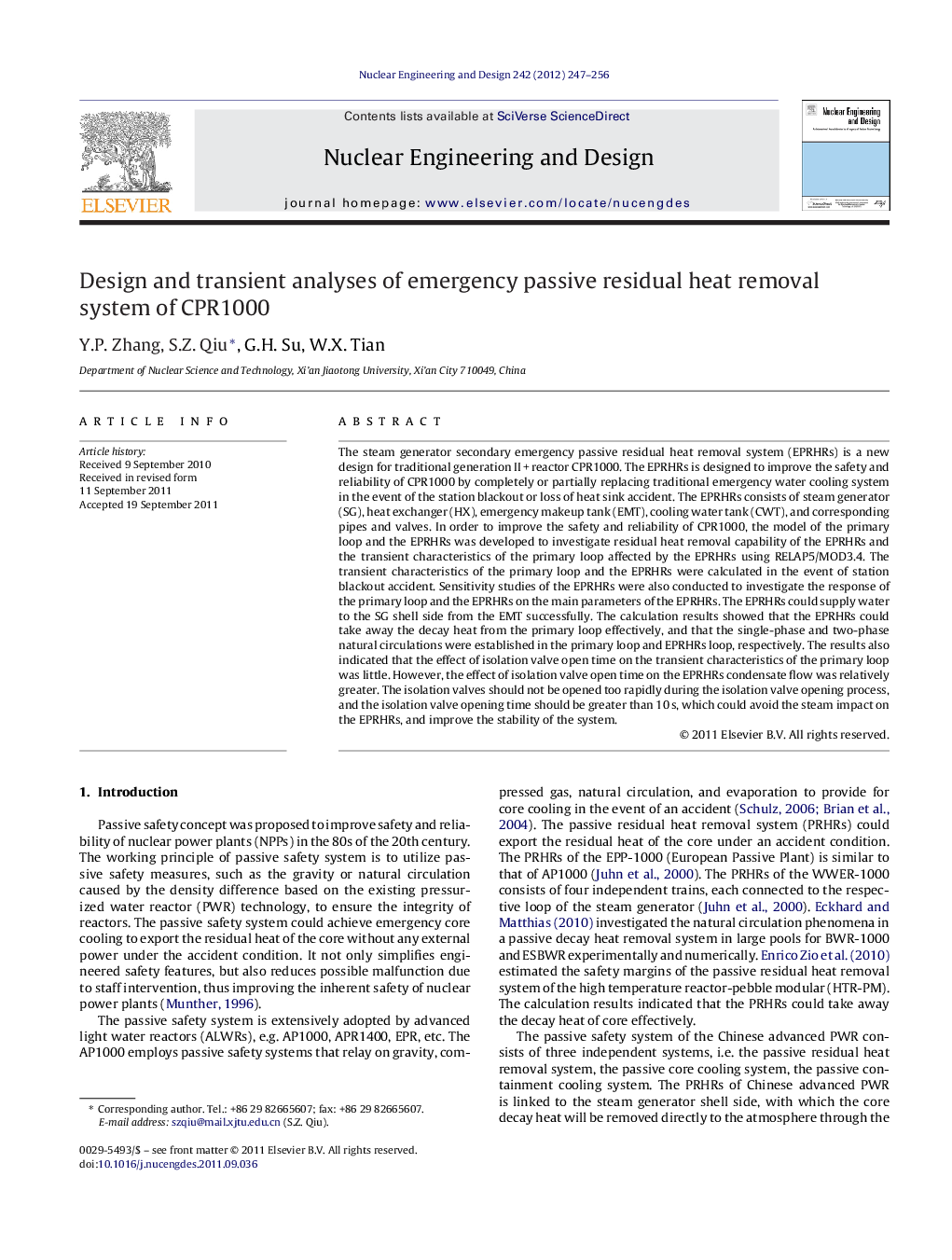| کد مقاله | کد نشریه | سال انتشار | مقاله انگلیسی | نسخه تمام متن |
|---|---|---|---|---|
| 297354 | 511755 | 2012 | 10 صفحه PDF | دانلود رایگان |

The steam generator secondary emergency passive residual heat removal system (EPRHRs) is a new design for traditional generation II + reactor CPR1000. The EPRHRs is designed to improve the safety and reliability of CPR1000 by completely or partially replacing traditional emergency water cooling system in the event of the station blackout or loss of heat sink accident. The EPRHRs consists of steam generator (SG), heat exchanger (HX), emergency makeup tank (EMT), cooling water tank (CWT), and corresponding pipes and valves. In order to improve the safety and reliability of CPR1000, the model of the primary loop and the EPRHRs was developed to investigate residual heat removal capability of the EPRHRs and the transient characteristics of the primary loop affected by the EPRHRs using RELAP5/MOD3.4. The transient characteristics of the primary loop and the EPRHRs were calculated in the event of station blackout accident. Sensitivity studies of the EPRHRs were also conducted to investigate the response of the primary loop and the EPRHRs on the main parameters of the EPRHRs. The EPRHRs could supply water to the SG shell side from the EMT successfully. The calculation results showed that the EPRHRs could take away the decay heat from the primary loop effectively, and that the single-phase and two-phase natural circulations were established in the primary loop and EPRHRs loop, respectively. The results also indicated that the effect of isolation valve open time on the transient characteristics of the primary loop was little. However, the effect of isolation valve open time on the EPRHRs condensate flow was relatively greater. The isolation valves should not be opened too rapidly during the isolation valve opening process, and the isolation valve opening time should be greater than 10 s, which could avoid the steam impact on the EPRHRs, and improve the stability of the system.
► Designing an EPRHRs for CPR1000.
► Developing a RELAP model of the EPRHRs.
► The EPRHRs could take away the decay heat effectively.
Journal: Nuclear Engineering and Design - Volume 242, January 2012, Pages 247–256